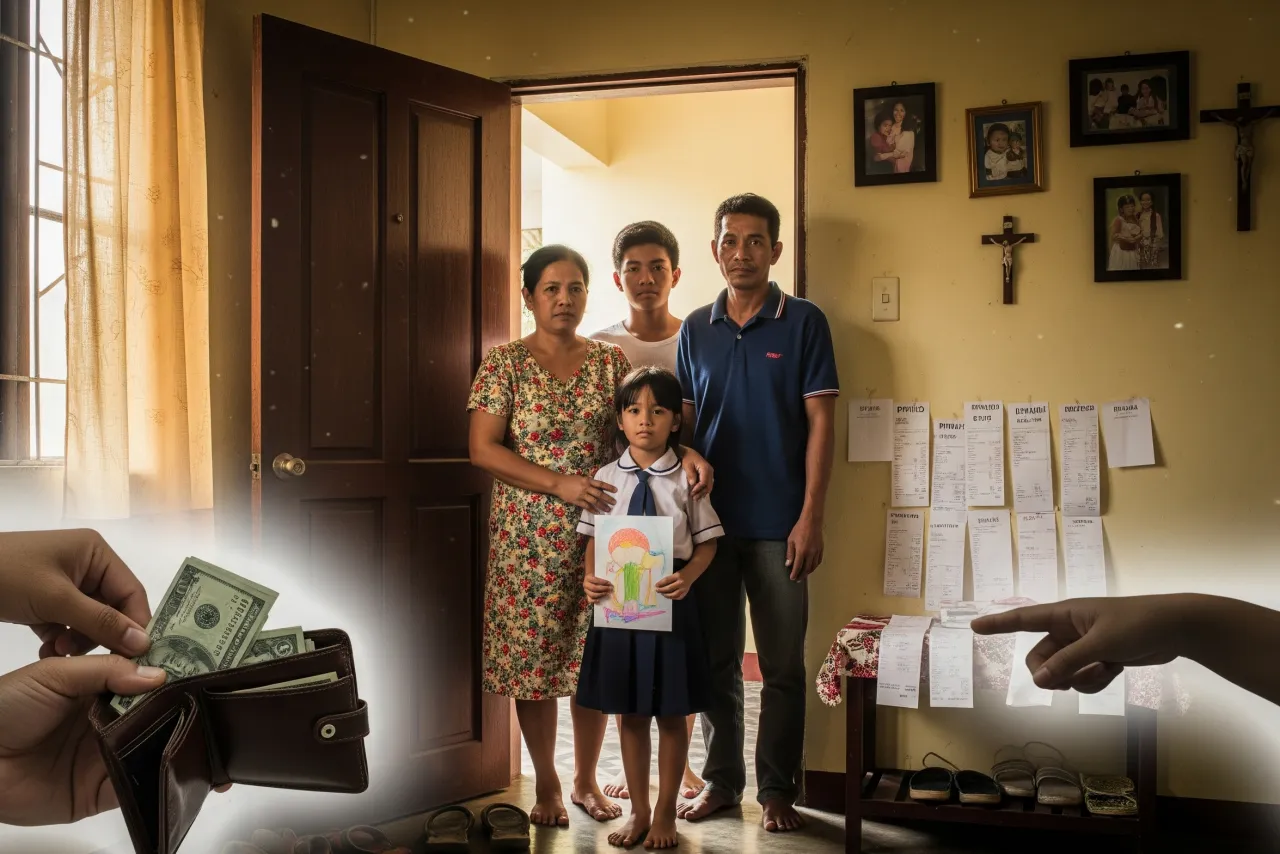❤️ The Unsung Heroes: The Hard Truth About Their Sacrifice
Walk through any neighborhood in the Philippines, from the sprawling cities to the quiet towns of Batangas, and you will see their legacy. The newly-built concrete homes, the small sari-sari stores, the children proudly heading to private schools—all funded by a hero working miles away. We call them our “Bagong Bayani,” our new heroes. It’s a title of immense pride, but it also hides a painful truth. This heroism is born of necessity. It is a sacrifice made at the cost of family gatherings, shared meals, and a child’s first steps.
This is the great drama of modern Filipino life. The question isn’t just if they are heroes, but rather, how OFWs keep the Philippine economy alive on their own shoulders. The answer is a fascinating, yet heartbreaking, story of numbers, sacrifice, and an entire nation’s reliance on its most dedicated sons and daughters.
The phenomenon of Filipinos working abroad isn’t new. It has been happening for decades. What started as a temporary solution to local unemployment has morphed into a permanent, crucial pillar of our national economy. We are a country of more than 10 million Overseas Filipino Workers, and their story is one of unwavering dedication. The money they send home doesn’t just change individual lives. It fuels our entire nation. It’s a powerful, almost unbelievable narrative of a global diaspora holding up an entire country’s financial future.
💸 The Numbers Don’t Lie: A Remittance Lifeline
The most direct and powerful way OFWs fuel the economy is through their remittances. These are not just small amounts of money. They are a massive, consistent flow of capital that injects lifeblood directly into our financial system. The numbers are staggering and paint a clear picture of our dependence.
📈 The Unseen GDP Driver
For years, remittances have been a driving force behind the Philippine Gross Domestic Product (GDP). For instance, in recent years, the Bangko Sentral ng Pilipinas (BSP) reported that remittances have consistently amounted to a significant percentage of our GDP. While the exact percentage fluctuates, it hovers around 8-10% annually. To put that in perspective, this single source of income is often larger than the combined output of major industries. It provides a stable and reliable source of foreign exchange. This influx of dollars and other currencies strengthens the peso. Consequently, it helps keep inflation in check and allows us to import crucial goods and services without crippling our national debt. These remittances are the economy’s lifeblood. They are the financial oxygen that keeps the nation breathing. Without them, our economic landscape would look drastically different, and far bleaker.
- Foreign Exchange: Remittances are a major source of foreign exchange, which helps stabilize the peso.
- GDP Contribution: They account for a significant portion of our GDP, driving economic growth.
- Economic Stability: The steady flow of money provides a crucial buffer against global economic downturns.
The narrative of OFWs as heroes is rooted in this reality. Their hard-earned money, sent from all corners of the globe, acts as a crucial safety net for the entire country. It is a powerful illustration of how the collective effort of individuals abroad can shape the destiny of an entire nation.
🏠 A Ripple Effect: How OFW Money Transforms Communities
The impact of remittances doesn’t stop at the national level. It creates a powerful ripple effect that is felt in every city, town, and rural community. The money sent home by OFWs transforms individual lives and, in turn, boosts local economies from the ground up.
🏗️ From Concrete Homes to Thriving Businesses
When an OFW sends money home, that money is immediately put to work. A portion is saved, but the majority is spent on essential needs, which creates a powerful domino effect.
- Real Estate Boom: Remittances are often used to build or renovate homes. This creates jobs for local construction workers, electricians, and carpenters. It also boosts local hardware stores and suppliers.
- Education and Healthcare: Families prioritize education and healthcare. OFW money pays for school tuition, books, and medical expenses. This supports our local schools and hospitals, ensuring their continued operation and growth.
- Consumer Spending: Remittances significantly increase the purchasing power of Filipino families. This fuels consumer spending on everything from food to electronics. This demand helps local businesses, from the smallest sari-sari store to major retail chains.
- Small Business Funding: Many OFWs save their money to start a small business back home, such as a tricycle franchise, a small eatery, or a beauty salon. This creates new jobs and entrepreneurship within the community.
The money sent by a single OFW in the Middle East can create a job for a carpenter in Cebu. It can pay for a child’s education in Mindoro. It can keep a small business afloat in Samar. It is a powerful, grassroots form of economic stimulus that operates outside of government programs. It is a testament to the immense power of individual sacrifice.
💔 The Human Cost: More Than Just a Transaction
We talk about remittances in cold, hard numbers. But behind every dollar and every peso is a human story of sacrifice, loneliness, and a powerful love that spans oceans. The economic benefits, however, come at a steep and often painful cost.
😢 The Long-Distance Family Drama
An OFW’s life is a constant battle between their professional duties and their emotional needs. They are often away for years at a time. Consequently, they miss out on the most precious moments of family life.
- Missed Milestones: They miss birthdays, graduations, and other important family events. A parent might only see their child’s growth through a screen. This leads to a deep sense of guilt and emotional disconnect.
- Parenting from a Distance: For OFW parents, raising a child from a distance is a constant challenge. This can create a strained relationship and, in some cases, lead to behavioral issues in children who lack a parent’s physical presence.
- Loneliness and Exploitation: OFWs often face loneliness, homesickness, and isolation. Furthermore, they are vulnerable to various forms of exploitation, from abusive employers to unscrupulous recruiters.
The emotional toll is immeasurable. We may praise them as heroes, but we often overlook the silent tears, the missed opportunities, and the broken connections that are a direct result of their economic contribution. The money they send is a lifeline, but it is a lifeline that comes at a profound human cost.
🤔 FAQs about OFWs and the Philippine Economy
Q1: How do OFWs keep the Philippine economy alive? A: OFWs keep the Philippine economy alive primarily through remittances, which account for a significant portion of the country’s GDP. This money is used for consumer spending, real estate, and small business investments, creating a powerful economic ripple effect.
Q2: What is the emotional cost of being an OFW? A: The emotional cost is immense. OFWs suffer from loneliness and homesickness. They also miss out on crucial family milestones, which can lead to strained relationships with spouses and children.
Q3: Are OFWs only working in the Middle East? A: No, OFWs work all over the world. While many are in the Middle East, a large number are also found in North America, Europe, and other parts of Asia.
Q4: Does the government have programs to help OFWs? A: Yes. The government has several agencies, such as the Overseas Workers Welfare Administration (OWWA) and the Department of Migrant Workers (DMW), dedicated to providing legal, financial, and welfare assistance to OFWs and their families.
The Future: A Sustainable Solution?
The reality of how OFWs keep the Philippine economy alive is a powerful story of sacrifice and resilience. However, it also begs a bigger question: is this a sustainable model for the nation’s future? Do we want a country where our best and brightest have to leave home just to give their families a good life? The ultimate goal should be to build a local economy so strong that Filipinos don’t have to leave. We must work towards a Philippines where our heroes can be just as successful at home as they are abroad. This would truly be the greatest tribute to their immense sacrifice.
What do you think is the biggest challenge facing OFWs and their families today? Share your thoughts below. 👇




